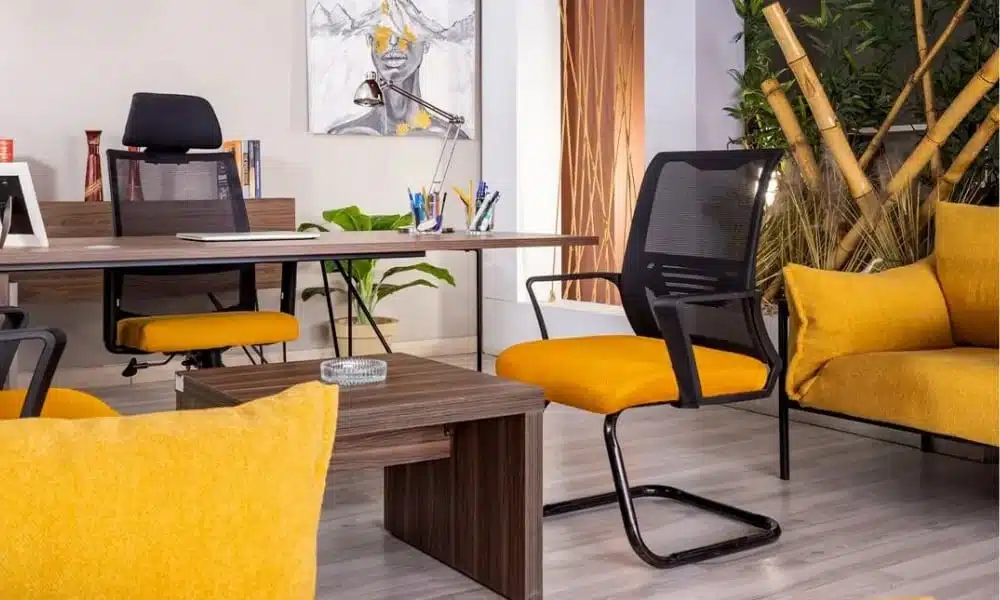The significance of commercial interior design extends far beyond aesthetics—it invisibly shapes employee experiences, client perceptions, and ultimately, your bottom line. In Singapore’s hyper-competitive business landscape, the physical environment you create speaks volumes before a single word is exchanged.
The Hidden Economics of Space
Walk into any thriving Singapore office, and you’re experiencing more than design—you’re witnessing a calculated business strategy. The stark reality is that spatial decisions carry profound financial implications that most business owners overlook until it’s too late.
“Our research indicates that thoughtfully designed commercial spaces in Singapore yield up to 32% higher employee retention rates and 27% increased client conversion compared to poorly designed counterparts.”
The financial mathematics are straightforward but frequently ignored:
- Every square metre costs a premium in Singapore’s expensive real estate market
- Each spatial configuration decision either enhances or diminishes productivity
- Design elements subtly influence client purchasing decisions and contract values
- Poorly conceived layouts silently drive talented employees toward competitors
The Psychological Architecture of Work
Beyond mere functionality, commercial spaces profoundly affect the mental states of everyone who enters them. This psychological dimension of design operates whether acknowledged or not.
Consider how these elements shape daily experience:
- Natural light exposure directly correlates with reduced absenteeism and improved cognitive function
- Acoustic management determines whether collaboration energizes or depletes teams
- Colour psychology impacts everything from creative thinking to anxiety levels
- Spatial hierarchies communicate company values more effectively than mission statements
Singapore’s Spatial Revolution
Singapore’s approach to commercial interior design has undergone a remarkable evolution, shaped by its unique constraints and cultural context.
“The most successful Singapore workspaces now blend Eastern spatial philosophies with Western functionality—creating environments that honour both productivity and wellbeing rather than sacrificing one for the other.”
This distinctive approach manifests through:
- Incorporation of biophilic elements that connect employees to nature despite urban density
- Thoughtful integration of cultural design elements that reflect Singapore’s diverse heritage
- Space-efficient solutions that transform limitations into advantages
- Technology integration that enhances rather than dominates human experience
The Post-Pandemic Design Landscape
The global health crisis fundamentally reshaped commercial design priorities, accelerating trends that were merely emerging before.
The most forward-thinking Singapore businesses have embraced:
- Flexible layouts that can rapidly transform between collaboration and focused work
- Enhanced air purification systems that communicate health consciousness to employees and visitors
- Technology-enabled spaces that seamlessly connect in-person and remote participants
- Touchless interfaces throughout the office environment to reduce transmission concerns
Beyond Aesthetics: The Ethical Dimension
Perhaps the most overlooked aspect of commercial design is its ethical dimension—how spaces either support or undermine human dignity and planetary health.
Leading Singapore design approaches now consider:
- Material sustainability and embodied carbon footprints throughout the space lifecycle
- Universal accessibility that goes beyond minimum compliance to genuine inclusivity
- Employee wellbeing features that acknowledge diverse physical and neurodiversity needs
- Cultural sensitivity in spatial arrangements and symbolic elements
The Investment Perspective
Viewing commercial interior design through an investment lens rather than as an expense fundamentally shifts decision-making. Strategic design choices function as business investments with measurable returns.
Consider these return metrics:
- Reduced absenteeism through improved air quality and ergonomics
- Enhanced creativity and innovation through thoughtfully designed collaboration spaces
- Strengthened brand perception through consistent environmental branding
- Improved recruitment outcomes through spaces that embody company values
Beyond Trends: Timeless Principles
While design trends inevitably evolve, certain principles transcend momentary fashions. These fundamentals survive precisely because they align with human needs and business realities.
The most enduring Singapore commercial spaces consistently demonstrate:
- Purposeful functionality that prevents the form from undermining practical needs
- Visual coherence that reflects brand identity without resorting to literalism
- Spatial flexibility that accommodates organisational evolution
- Material quality that communicates permanence and stability in a volatile business landscape
The Inequality of Space
Perhaps the most uncomfortable truth about commercial design in Singapore is how it reinforces existing power structures and hierarchies. The disparity between executive offices and operational workspaces often mirrors broader societal inequalities.
“The average square meterage allocated to C-suite executives in Singapore is 7.3 times greater than that provided to entry-level employees—a ratio that silently communicates organisational values more powerfully than any handbook.”
This spatial inequality manifests in multiple dimensions:
- Access to natural views and daylight frequently correlates with seniority rather than functional need
- Premium materials and finishes cluster around client-facing areas while employee-only spaces receive utilitarian treatment
- Amenities like comfortable break areas and wellness rooms remain inaccessible to many frontline workers
- Environmental controls over temperature, lighting, and acoustics concentrate power in the hands of a few rather than many
The Future: Democratisation of Design
The most progressive Singapore businesses are pioneering a new approach—one that distributes spatial privileges more equitably across organisational levels. This democratisation of design reflects a fundamental shift in workplace philosophy.
Evidence suggests these more egalitarian approaches yield tangible benefits:
- Flatter spatial hierarchies correlate with increased cross-departmental collaboration
- Shared premium amenities boost overall employee satisfaction scores
- Distributed environmental controls reduce workplace conflicts
- Transparent space allocation policies strengthen organisational trust
For businesses genuinely committed to long-term success, the physical environment becomes not an afterthought but a strategic canvas. As competition for talent, clients, and market share intensifies, every spatial decision either strengthens or weakens your position. The most successful Singapore enterprises understand this reality, recognizing that thoughtful investment in commercial interior design yields returns far beyond the visible surface.
You may also like
-
Winter Storm Damage: What to Do When Snow and Ice Cause Structural Problems
-
How Trim Head Screws Streamline Furniture Assembly and Panel Installation
-
Bright Ideas, Low Bills: A Utah Homeowner’s Guide to Energy-Efficient & Safe Holiday Lighting
-
Your Dream Home Journey: A Step-by-Step Guide to Custom Building in Loganville, GA
-
The Silent Guardians: Singapore’s Tree Pruning Heroes Unveiled

